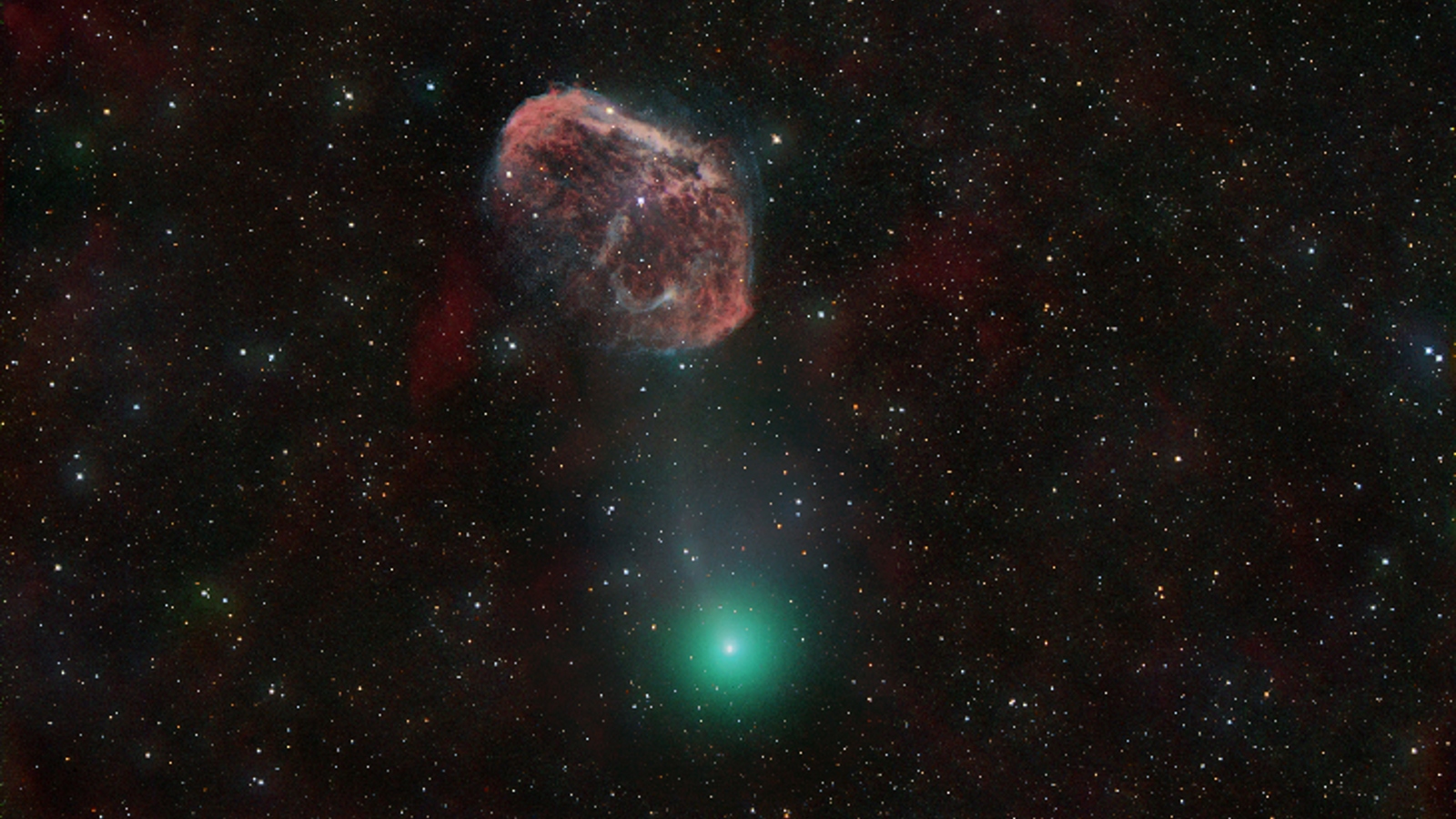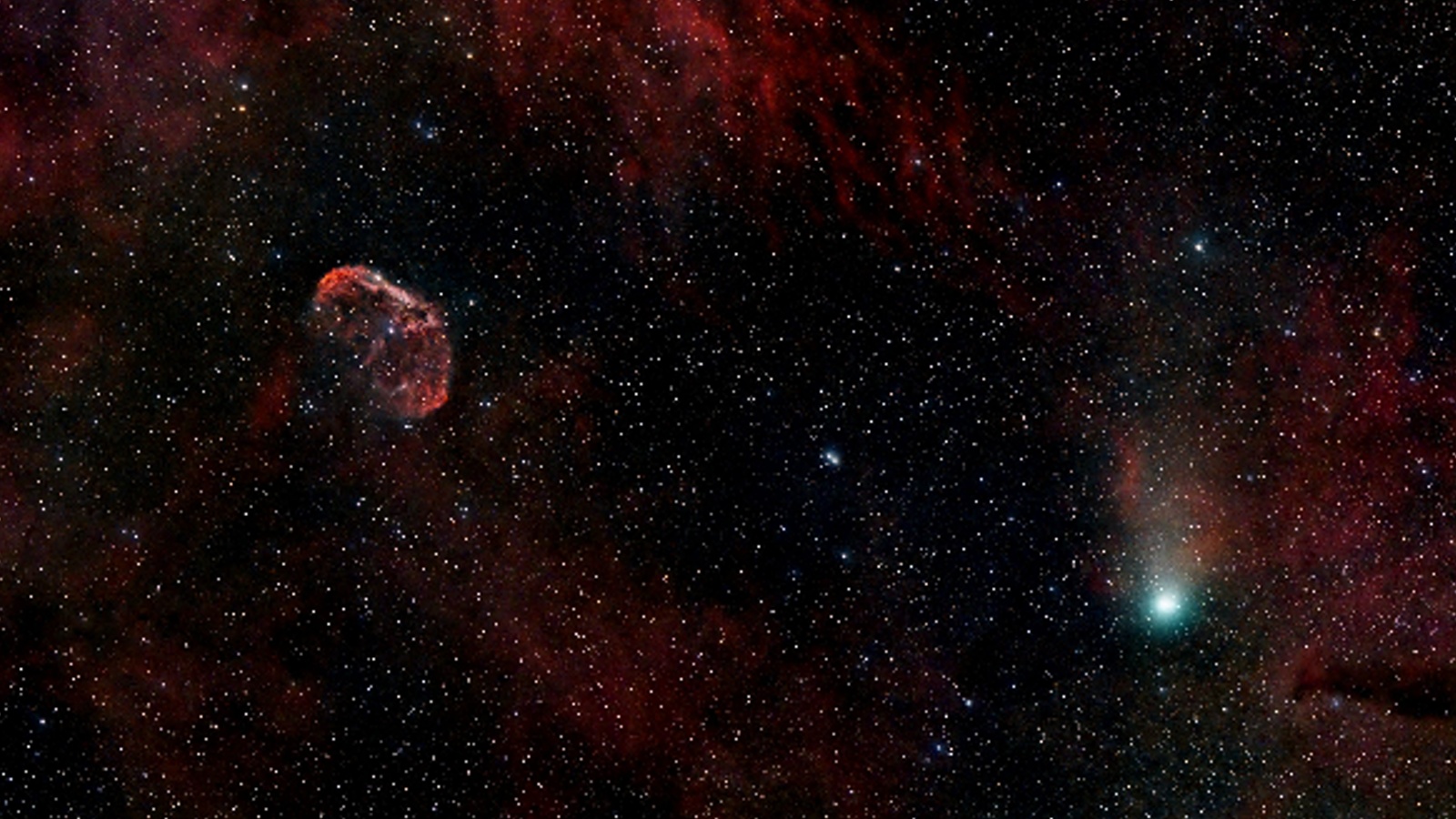
Stunning new photos show the volcanic "devil comet" zooming in front of a striking crimson nebula as it races toward Earth. The green-colored comet, which is long overdue for another eruption, will make its closest approach to our planet later this year.
The explosive icy object, named Comet 12P/Pons–Brooks (12P), is a cryovolcanic, or cold volcano, comet that spans around 10.5 miles (17 kilometers) across and orbits the sun every 71 years. Cryovolcanic comets erupt when solar radiation opens up cracks in their hard shell, or nucleus, causing their icy guts to shoot out into space. This expands the comets' comas — the clouds of ice, dust and gas that surround them — and makes them appear much brighter for short periods.
In July 2023, astronomers detected the first major outburst from 12P for more than 69 years, which was followed up by several similar eruptions. During these events, 12P's expanded coma took on an irregular shape due to a notch in its coma, which looked similar to a pair of horns and earned the comet its sinister nickname. However, 12P's most recent eruption in November did not produce the iconic horns, suggesting the comet may have lost its notch and that we may not see the horns again.
12P is scheduled to slingshot around the sun in April before making its closest approach to Earth on June 2, when it may become visible to the naked eye.
On Jan. 12, several onlookers captured images of 12P passing in front of the Crescent Nebula (NGC 6888) — a massive cloud of ionized gas located 5,000 light-years from Earth.
Amateur astronomer Michael Jäger captured one of the clearest images of the two celestial objects together (shown above) from Martinsberg in Austria, while Rok Palčič from the Rezman Observatory in Slovenia also captured a great shot (shown below).

One of the most striking aspects of both images is the vibrant green hues of 12P's coma. This colored light is given off by molecules of diatomic carbon (two carbon atoms stuck together) and is extremely rare, according to Spaceweather.com.
Similar green hues were also given off by the green comet C/2022 E3 (ZTF), which passed by Earth in February 2023; and Comet Nishimura (C/2023 P1), which slingshotted around the sun in September last year.
12P has not erupted since Nov. 14, 2023. Until then, the comet had erupted roughly every 15 days like clockwork. 12P's current lack of activity has puzzled scientists, especially as the eruptions were predicted to become more frequent and intense as the comet got closer to the sun and soaked up more solar radiation, according to Spaceweather.com.
Hopefully, the comet will resume its violent eruptions as it gets closer to Earth, which would give researchers a great opportunity to study this poorly understood phenomenon in greater detail.







